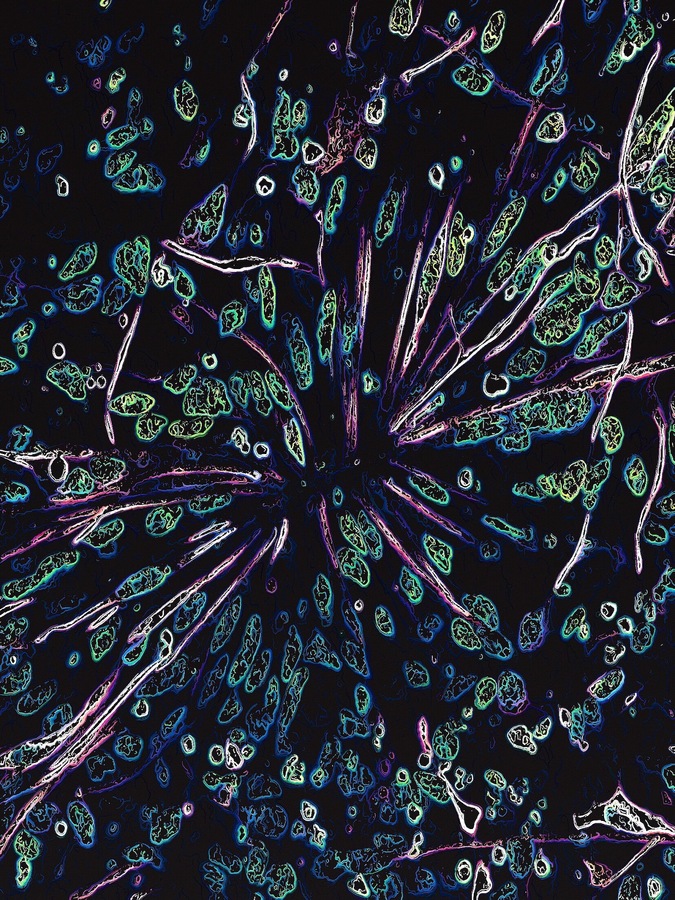Croucher Image Awards 2020
The inaugural Croucher Image Awards competition was launched in April 2020, with Croucher scholars of all generations invited to search their storage devices and identify striking images that express narratives within natural sciences, technology or medicine.
The competition was enthusiastically received, attracting more than 40 submissions. With themes ranging from astronomy and wildlife to genetics and neuroscience, each image represented an aspect of scientific enquiry and a way to see the world through the eyes of the scholars.
Eight images were shortlisted by a selection panel of trustees and invited experts, who assessed the submissions on the basis of visual merit and storytelling. Four were shortlisted as finalists, with Dr Christy Hung’s image, below, named the overall winner.
The following article relates the story behind Hung’s winning image, while the pictures of runners-up Dr Maurice Leung, Professor Albert Kong, and Dr Nick Chun So, and insights into what inspired them is available here.
Winner
“Milky Way”
DR CHRISTY HUNG (Croucher Cambridge International Scholarship 2013)
University College London, UK

The winning entry in the first Croucher Image Awards by Dr Christy Hung evokes the awe of our galaxy but was created from what can be seen through the microscope, not telescope. The image is of cortical neurons derived from human induced pluripotent stem cells, as captured through a Leica SP5 Confocal Microscope.
Hung’s visual of laboratory-made nerve cells came from her research, which uses human stem cell models to study neurodegenerative diseases. She is conducting the work at University College London (UCL) as a research fellow in the Department of Developmental Biology.
Hung’s image was achieved through immunocytochemistry, a commonly used cell imaging technique in which the cells are fixed with four per cent formaldehyde solution, made permeable, and stained with antibodies. This enables the visualisation of protein expression corresponding or binding to specific antibodies.
The induced pluripotent stem cells (iPSCs) are skin cells that have been donated by healthy volunteers and people living with Alzheimer’s disease and converted into cells similar to human embryonic stem cells. These are later developed and guided to simulate different types of brain cells.
Under the microscope, these cells are not only beautiful, but are morphologically similar to nerve cells found in the human brain, according to Hung. Furthermore, as these nerve cells become functionally mature, they begin to “connect and talk to one another”, she said.
The patterns of neuronal activity tell a story on the degeneration of nerve cells during Alzheimer’s disease. “The fact that these laboratory-made neurons are morphologically and electrically similar to human nerve cells found in the brain means that we now have a very powerful human model where we can compare cells from people with and without dementia, to understand what causes brain cells to become dysfunctional and eventually die in disease,” Hung said.
She named her winning image “Milky Way” because she “found that the human brain is as fascinating as the Milky Way”, she said.
Hung, who was born and raised in Hong Kong, has from a young age maintained a fascination for biosciences. It was during her final undergraduate year studying biochemistry at the University of Hong Kong, when she was examining neural tube development in mouse embryos for a research project, that she first became interested in neuroscience.
She pursued a PhD at the University of Cambridge and moved to UCL in 2019 after two years of postdoctoral training at Cambridge.
On her experience as a Croucher scholar, Hung said: “Collaborations are absolutely the key to success in scientific research and I can’t appreciate enough all the incredible opportunities being a Croucher scholar has opened up to me… I was the given the opportunity to meet with other Croucher scholars and share our research. I feel incredibly inspired by the exciting new findings presented by other scholars.”
In many ways, the Croucher Image Awards competition is an extension of that experience, offering the chance to share and engage with other scholars in their respective fields.
To view Dr Christy Hung’s Croucher profile, click here.